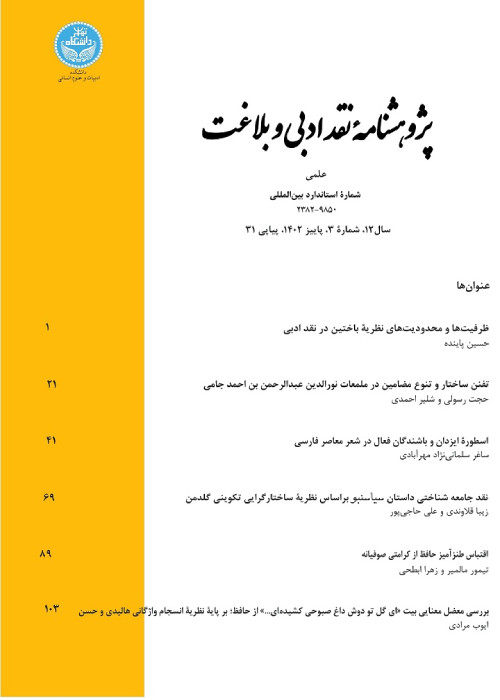The Typology of Place and The Relationship between Place and Subject in the Discourse of Tasawwuf; A case study in the Sufist legacy of Abu Sa’eed AbolKhayr
The issue of place, its typology, and the relations between the subject and the place are important elements in any discourse and genre studies. To analyze any discourse, it is also essential to discover the hidden layers in such relations, and Tasawwuf, as a discourse is no exception to this rule. To discover and spot such relations, the authors, by studying TheMaghamat of Abu Sa’eed, and considering Neishabour as the bigger place and khaneqah as the focal place of the discourse, intended to illustrate that before the presence of Abu Sa’eed, Neishabour had enjoyed a civic structure, and semantic continuity, and it also was a place of “integrations”, until the distinguishing presence of Abu Sa’eed, affected the city’s integration and its practical elements, and led to a “spatial disintegration”. In other words, the agency of the subject “reconstructed” the authority of the place in such a way that the governing discourse of religion faded and the mosque was marginalized by the khaneqah. Meanwhile, khaneqah, on its route to gain the discursive control, as a place for educating the Sufis, turned into a “network of induction” in which the relationship between the sufi’s spiritual rank and his position in the Khaneqah in one hand and the architectural arrangement of the khaneqah and the geometry of power in the discourse of Tasawwuf on the other hand were balanced. The present study showed that there were three kinds of relationship between the participant and place: first, when the primary function of the place is to set a context for the narrative domain, the subject has superiority over the place; second, when the place gives the participant a meaning and identity previously lacking, the place has superiority over the participant; and third, when the intention of the subject is to interact with the place and in so doing both give meaning to and get meaning from each other. The study also showed that Abu Saeed’s agency in all these acts and their interactions finally set the stage for the expansion, spread and the entrance of the newly found discourse of the subject in power relations
- حق عضویت دریافتی صرف حمایت از نشریات عضو و نگهداری، تکمیل و توسعه مگیران میشود.
- پرداخت حق اشتراک و دانلود مقالات اجازه بازنشر آن در سایر رسانههای چاپی و دیجیتال را به کاربر نمیدهد.


